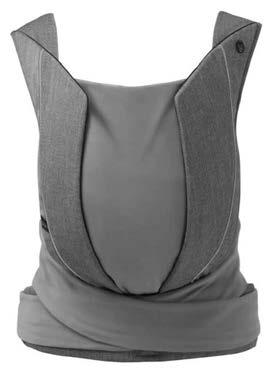BIRTH
FOCUS ON
Birth AS YOU PREPARE TO WELCOME YOUR NEW ARRIVAL, WE LOOK AT THE DIFFERENT CHOICES WHEN IT COMES TO L ABOUR s your pregnancy draws to an end, your thoughts will inevitably turn towards the delivery, quite possibly with a mixture of excitement and dread. While some women can’t wait to experience this everyday miracle, others are consumed by anxiety. Yes, childbirth is messy and it hurts and quite frankly anyone who says otherwise is either lying or showing off. But honestly, you won’t care because it’ll also be the most wondrous, most exhilarating and most memorable day of your life. From living-room floor to operating theatre, aromatherapy to epidural, there are many ways to bring a baby into the world.
A
HOME BIRTH If you’re healthy and your pregnancy is low risk, home can offer a safe and comfortable place to give birth, with a familiar midwife at your side. Some women also like to hire a doula. In England, around one in 50 babies are delivered in a home birth and for low-risk women who have already had their first child, it’s thought to be as safe as a hospital delivery. If complications arise, you and your baby will be transferred to hospital by ambulance.
MIDWIFERY UNITS & BIRTH CENTRES For those who would like a non-medical setting but don’t want a home birth, then midwifery units and birth centres, which are designed to feel more like home than a hospital, can be a perfect ‘halfway house’.
60 | The Ultimate Baby Book 2021
Women who give birth in midwifery units and birth centres are less likely to end up having intervention, like forceps or ventouse, than women who give birth in hospital. However, if your centre isn’t attached to a hospital, you won’t be able to have certain kinds of pain relief, such as an epidural, and you may need to be transferred if complications arise.
HOSPITAL BIRTH During a normal hospital delivery, midwives provide the majority of care. If labour progresses smoothly, you’ll be able to move around, try out different positions and use breathing exercises and relaxation techniques. However, you’ll be safe in the knowledge that doctors, anaesthetists and other professionals are on hand if you or your baby need extra support or pain relief. This can be especially reassuring for first-time mums.
CAESAREAN SECTION Around one in four babies are delivered by caesarean section in the UK. This might be a planned c-section due to known pregnancy complications, or an emergency c-section due to problems that arise during labour, meaning the baby needs to be born quickly. This is usually done using spinal anaesthesia, but in some cases, a general anaesthetic may be necessary. Although c-sections are sometimes perceived to be the ‘easy option’, they involve major abdominal surgery and recovery can take several weeks or longer. Consultant
gynaecologist, Mrs Pradnya Pisal from London Gynaecology says, “Caesareans are not without risks, such as infection in the wound or the lining of the uterus, heavier bleeding than vaginal delivery, deep vein thrombosis, and injury to organs such as bowel or bladder, especially if there’s history of previous surgery.” In addition, babies are more like to be admitted to neonatal intensive care following a c-section birth. Mrs Pisal adds, “Ideally, we recommend vaginal birth unless there’s a very good reason to avoid vaginal delivery.”
WATER BIRTH In England, around 30 per cent of women use water or a birth pool for pain relief, and around six per cent of women actually give birth in a pool. Being in water during labour can help you relax and make the contractions seem less painful. Megan Rossiter is the founder of birth-ed, which runs hypnobirthing and antenatal classes throughout the south east. She says, “Birthing in water can encourage a baby into an optimal position, reducing tearing and the chances of intervention such as speeding up labour with a hormone drip or the chance of instrumental birth. Occasionally, women may find that using the pool in early labour slows things down.” Many women feel that giving birth in















